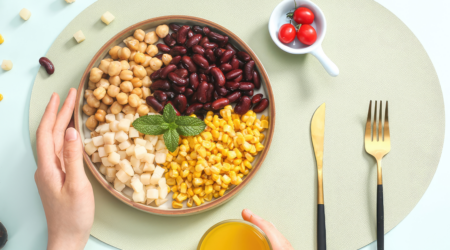What Does a Balanced Diet Look Like
What does a balanced diet look like? This question is at the heart of a healthy lifestyle, guiding us toward nourishing our bodies with the essential nutrients they need to function, recover, and protect against disease.
A balanced diet is about more than just the foods we eat; it’s about understanding the balance of macronutrients, the role of portion control, and the benefits of incorporating a variety of foods into our daily routines.
What Makes Up a Balanced Diet?
A balanced diet includes a mix of:
- Carbohydrates: These are your body’s main energy source, found in fruits, vegetables, grains, and beans. They fuel your brain and muscles and should not be skipped.
- Proteins: Vital for building and repairing tissues, proteins are found in meat, fish, dairy, and legumes. They play a key role in creating enzymes and hormones.
- Fats: Often misunderstood, fats are essential for nutrient absorption, energy, and cell growth. Look for healthy sources like nuts, seeds, fish, and oils.
The Importance of Portion Control
Understanding how much to eat is as crucial as knowing what to eat. Portion control is key to:
- Avoiding overeating
- Managing calorie intake
- Maintaining a healthy weight
Why Variety Matters
Incorporating a wide range of foods into your diet ensures you get a diverse set of nutrients. This means eating:
- A variety of fruits and vegetables, aiming for different colors to maximize nutrient intake.
- Both whole grains and refined grains keep things balanced.
- Different sources of protein, including plant-based options.
- Healthy fats to support your heart and brain health.
Evolving Dietary Guidelines
Our understanding of a balanced diet has grown, with current guidelines suggesting:
- A shift towards more whole foods and plant-based options.
- Reducing processed foods and sugars.
- Emphasizing the quality of the food we eat over individual nutrients.
The benefits of following a balanced diet are clear, from increased energy and improved mood to a lower risk of chronic diseases and better weight management. It’s about giving your body what it needs to thrive.
Making a Balanced Diet Work for You
Adopting a balanced diet doesn’t have to be overwhelming. Start with small changes, like:
- Incorporating more vegetables into your meals.
- Choosing whole grains over refined grains.
- Opting for healthy fats.
Remember, the overall pattern of your eating habits matters most. An occasional indulgence is part of life, and what you eat regularly impacts your health the most.
If you want to deepen your understanding of how your diet impacts your health, consider exploring the connection between diet and gut health.
Our guide, “Gut Health 101: How to Create a Diet Plan Based on Your Gut Microbiome,” is packed with practical tips for tailoring your diet to support your gut health, a crucial aspect of overall well-being.










